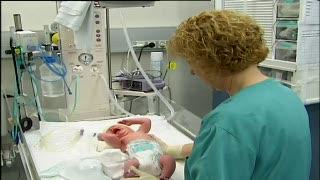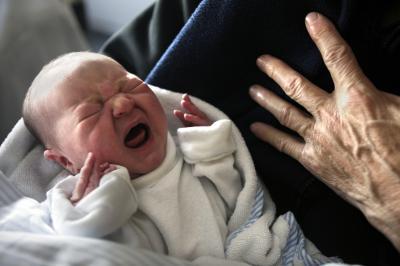Nonetheless, "although the observers cannot recognise the cause properly, when babies cry because they are in pain, this causes a more intense affective reaction than when they cry because of angry or fear," outlines Chóliz.
For the experts, the fact that pain is the most easily recognisable emotion can have an adaptive explanation, since crying is a warning of a potentially serious threat to health or survival and thus requires the carer to respond urgently.
Anger, fear and pain
When a baby cries, facial muscle activity is characterised by lots of tension in the forehead, eyebrows or lips, opening of the mouth and raised cheeks. The researchers observed different patterns between the three negative emotions.
As Chóliz notices, when angry the majority of babies keep their eyes half-closed, either looking in apparently no direction or in a fixed and prominent manner. Their mouth is either open or half-open and the intensity of their cry increases progressively.
In the case of fear, the eyes remain open almost all the time. Furthermore, at times the infants have a penetrating look and move their head backwards. Their cry seems to be explosive after a gradual increase in tension.
Lastly, pain manifests as constantly closed eyes and when the eyes do open it is only for a few moments and a distant look is held. In addition, there is a high level of tension in the eye area and the forehead remains frowned. The cry begins at maximum intensity, starting suddenly and immediately after the stimulus.

Spanish researchers have studied adults accuracy in the recognition of the emotion causing babies to cry. Eye movement and the dynamic of the cry play a key role in recognition.
(Photo Credit: SINC)

Although the main reasons are hunger, pain, anger and fear, adults cannot easily recognise which emotion is the cause of the tears.
(Photo Credit: SINC)
Source: FECYT - Spanish Foundation for Science and Technology